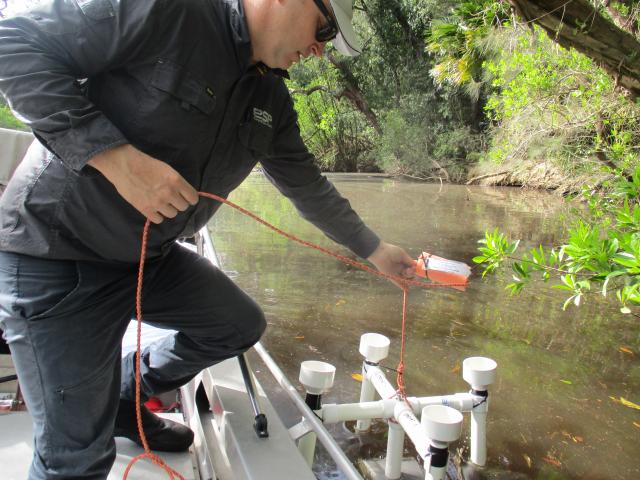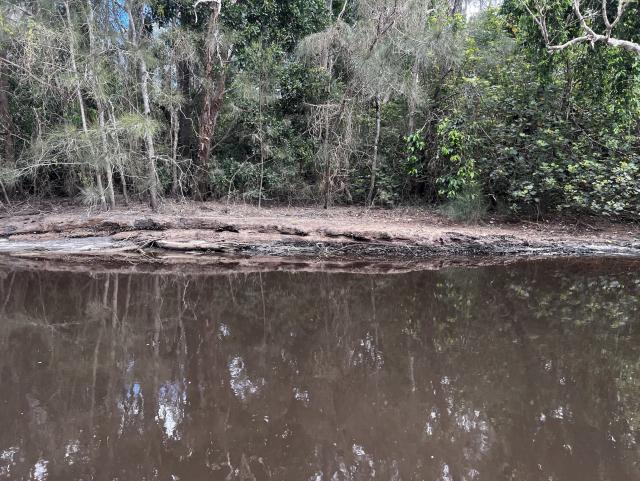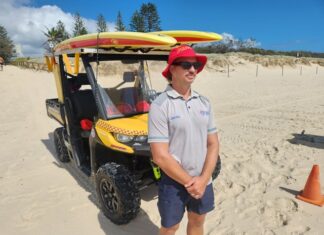Sediment plays a critical role in supplying nutrients to ecological systems in waterways but Noosa’s urbanisation has led to changes to the natural waterway, the distribution of sediment and the waterways natural uptake of it in mangroves and wetlands, resulting in excessive sediment levels impacting the ecosystem.
Funded by The Nature Conservancy and Noosa Parks Association with assistance from the Noosa Men’s Shed, aquatic ecologist Dr Simon Walker of Ecological Service Professionals, has been conducting the Noosa Sediment Accumulation Study.
Excess fine sediment in the Noosa estuary has been implicated in a reduction of diversity in benthic invertebrates and changes in the extent of important estuarine habitats such as seagrass meadows and mangroves, Dr Walker said last Friday in a talk on the study at Noosa Park’s Association’s Friday Forum.
He said understanding the patterns and drivers of sedimentation rates was important to inform management decisions for Noosa River.
Sediment transports energy from hinterland areas along rivers and flood plains to the near shore environment. Particularly during floods, sediment is spread across wetlands and mangroves, deposited in varying quantities along the meandering waterway, enriching the habitat.
“When we develop rivers we straighten them, protect properties with rock walls. During floods it speeds up the flow of the river, creates more sediment build up and makes floods catastrophic,” Dr Walker said.
“There’s been substantial disruption through the catchment due to excess sediment, particularly during floods.
“Too much of a good thing can go bad,” he said, adding that nutrients sediment carried toxins and pollutants.
“Excess sediment causes build up, loss of natural systems and results in a negative downhill slide.
“We know the Noosa system has changed over time. We have changed the entrance to the river. There’s been extreme modification to the natural sponges (such as mangroves) that would have soaked up the sediment and sediment lasts for a long time.”
Dr Walker’s study builds on previous studies conducted in recent years on the Noosa River.
A University of Queensland project looked at the ecological diversity in the benthic layer (river bottom) and found diversity of species including shellfish and crustaceans dropping off over 20 years.
Seagrass mapping has identified substantial changes in distribution of seagrass and decline with no seagrass now occurring upstream of the car ferry, little in the river mouth and deposits mainly restricted to areas of Lake Doonella and Weyba. There’s been a loss of 23 hectares of seagrass with an 83 per cent loss of sea grass over the past 33 years.
Seagrass decline has resulted from sediment excess which has caused decreased light needed for plant growth due to increased water turbidity, direct smothering from sediment and an inability of seeds to sprout due to being buried in sediment.
Other river studies have included annual reports by Healthy Land and Waterways on water quality and ongoing water quality monitoring by Noosa Integrated Catchment Association (NICA).
Dr Walker’s study included the measuring of sediment distribution over 30 sites along the river and lakes using a collection device built for the purpose by Noosa Men’s Shed. The results are to be collated in a map marking the variation in sediment buildup across the waterway and Dr Walker hopes to co a sediment fingerprint that would link sediment back to its source.
Sediment excess is a problem being experienced in waterways globally and management options are available, Dr Walker said.
“We need big manoeuvres to make big changes to go on into the future,” he said.
Among the options in use around the world is the rewinding of rivers – returning rivers to their natural state, reintroducing its meanders and creating areas for sediment to be deposited.
“If you keep the edges intact with vegetation it will slow down the water flow and allow sediment to spread,” he said.
Other places like the Yarra River in Melbourne have created floating wetlands to absorb the sediment.
“All management cost dollars, but it can’t just be about planting trees. In terrestrial systems it’s more complicated,” he said.
Types of things that should happen include restoring the function of the wetlands, providing buffers to water flow and restoring the hydrology.
Other options include dredging which already occurs in the Noosa River or vacuuming sediment from the river floor and using it to build habitat.
“Wetlands are declining faster than the world’s forests,” Dr Walker said.
“Now is the time to do something.”








